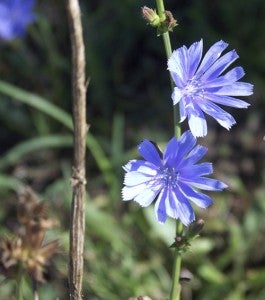Column: Watcher by the road
Published 9:50 am Saturday, July 31, 2010
My neighbor Crandall stops by.
“How are you doing?” I ask.
“Everything is nearly copacetic. I was just at the Hartland Literary and Euchre Club meeting held at the Greasy Spoon. The steak was well did and I got a short nap between the salad and the entrée. I sneezed the corn flakes out of my bowl this morning. I sneezed so hard that I broke both my shoelaces.”
“I hope you did the Dracula sneeze and placed your nose in your elbow,” I say. “Maybe your moustache is backing up on you?”
“I just combed out my whiskers. It had more snarls than a cage full of lions. Salad dressing loves whiskers. Speaking of salads, I planted dandelions this year. I figure they are going to grow anyway, so I might as well have the best in the neighborhood. They are growing much better than anything in my vegetable garden. I crossed a potato with a sponge this year. It doesn’t have much taste, but it sure sops up the gravy. Vegetables and I go way back. Whenever I got a little cranky when I was a baby, my father would put me in a highchair and feed me vegetables.”
“Did it work?” I ask.
“I would quiet right down. Of course, I still don’t like jalapenos.”
When it rains, it pours
I walked with a group at the Morton Arboretum in Lisle, Ill. Joy Morton, founder of the Morton Salt Company, established the Arboretum in 1922. The company featured the Morton Umbrella Girl and the slogan, “When it rains it pours.” Morton’s Thornhill Estate, established in 1910, formed the basis of the Arboretum. Morton’s father, Julius Sterling Morton, was the founder of Arbor Day in Nebraska in 1872 and secretary of agriculture under President Grover Cleveland. I identified birds and flowers in the 1,700-acre outdoor museum featuring collections of 4,117 kinds of plants. At the end of the walk, a woman in the group gave me a bookmark. It offered “Advice from a Hummingbird.” The advice read as follows: “Sip the sweet moments. Let your true colors glow. Don’t get your feathers ruffled over little things. Take yourself lightly. Just wing it. Keep your visits short and sweet.” The gift and the walk were both sweet moments for me.
Chicory
The side of the road was a beautiful blue. The color was provided by chicory. Chicory is best known for being an alternative to coffee. A nickname for the flower is “watcher by the road.
” This moniker originated from a German folk legend about a young couple who parted. The young maiden went every morning to the road where she had separated from her betrothed. There she awaited his return from a long voyage. She returned home every evening, growing sadder by the day. She eventually succumbed to her grief and died by the side of the road. Chicory grew at that spot. Chicory opens its flowers in the morning and closes them at night.
Earwigs
I’ve heard from people who have been seeing earwigs. No, an earwig is not something to disguise a balding ear. An earwig is a dark, reddish-brown, 5/8-inch long insect identified by the pincer-like projections (forceps) on the tip of the abdomen. The earwig gets its name from the myth that it crawls into a sleeping person’s ear and tunnels into the brain. Earwigs prefer moist, dark
areas and are most active at night. They are commonly found in mulch, organic debris, cracks, crevices, and under flowerpots and boards. They do enter houses. Earwigs feed on both living and dead plant material as well as some other insects. Generally, earwigs are not destructive. They are not venomous and although they may pinch with their forceps, I have found the action to be harmless. In large
numbers, earwigs may feed on tender vegetation and damage such plants as dahlias, lettuce, marigolds, roses, strawberries, and zinnias.
Cluster flies
Cluster flies typically make their debut in the fall when they fly to the sunny sides of houses in search of protected sites for overwintering. These flies are not reproducing within the building, but become active on warm, sunny days in winter and crawl out of wall voids and attics in a confused attempt to go back outside. The
cluster fly is slightly larger than the common housefly. They are dull-gray with black markings and have golden-yellow hairs on the thorax, which gives the appearance of a golden sheen. The adults leave their protected overwintering sites in the spring and lay eggs on soil that contains earthworms. The larvae feed on earthworms.
Q and A
“Are daddy longlegs the world’s most poisonous spiders?” No. Spiders are venomous, not poisonous. Venomous animals store toxins internally and release them by biting or stinging, disabling the organism they bite or sting. Poisonous animals typically secrete toxins through their skin so that whatever creature bites or touches them is poisoned. The daddy longlegs that we have in this country is not a spider. It is a harvestman–an arachnid that has no fangs, no venom, and is unable to create silk or a web.
“What is the difference between a damselfly and a dragonfly?” Both are members of the insect order Odonata. Damselflies appear slim and dainty. While at rest, they fold their wings above their back. Dragonflies are larger and at rest, hold their wings outstretched and flat.
Nature lessons
A few of my favorite collective nouns are a whiteness of swans, a congress of crows, and an asylum of loons.
The silk growing out of an ear of corn is the female part of a corn plant and the tassel growing from the top of the cornstalk is the male part that produces pollen. Each kernel has its own strand of corn silk.
Pelican Breeze
Please join me as I host cruises on Albert Lea Lake on August 15, and September 5. It’s a great lake even if it isn’t a Great Lake. Call 383-2630 for information.
Thanks for stopping by
“Look at everything as though you were seeing it either for the first or last time. Then your time on earth will be filled with glory.”–Betty Smith
“Most of the important things in the world have been accomplished by people who have kept on trying when there seemed to be no hope at all.” –Dale Carnegie
DO GOOD.
Al Batt of Hartland is a member of the Albert Lea Audubon Society. E-mail him at SnoEowl@aol.com.






